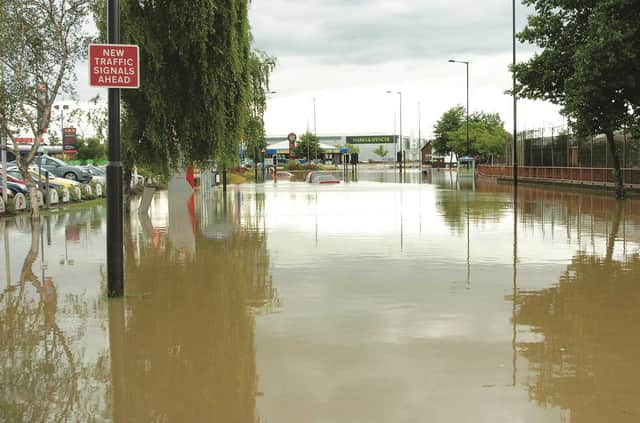Better placed to deal with floods than ten years ago


Few who were alive in the late 1980s can forget how the TV weatherman was left red-faced after he insisted a huge storm a viewer had asked about was going to miss the UK and it ended up ravaging the south east.
But one of the Met Office’s current experts, reflecting on changes since the 2007 floods, said such embarrassment should be avoidable these days.
Advertisement
Hide AdAdvertisement
Hide AdKevin Wadsworth, a civil contingency officer for the Met Office, said: “There’s a big difference between now and the situation in 1987.
“Michael Fish was looking at one forecast, which said the storm was going to pass over France.
“Nowadays we look at hundreds of different weather forecasts from different sources and have much better simulators than we did in the 1980s and 1990s.”
The forecasts in June 2007, when Rotherham was one of several parts of the country hit by record-breaking rain levels and rising flood waters, were “pretty good”, Mr Wadsworth said, with weather warnings going out in good time.
Advertisement
Hide AdAdvertisement
Hide AdHe added: “The rainfall that came down was just of historic proportions.
“There was also serious flooding in Tewkesbury, Wales and parts of the south east.”
A lot of positives came out of the flooding, Mr Wadsworth said.
One of these is the closer working relationship of the Met Office and the Environment Agency, who founded a joint forecasting centre in Exeter.
Advertisement
Hide AdAdvertisement
Hide AdMr Wadsworth said: “We have EA forecasters side by side with Met Office forecasters to ensure the communication and issuing of warnings is consistent and coherent.
“Forecasting models have improved over the years but it’s important to ensure weather warnings are used effectively.
“We’re doing our best to make sure the specific information required gets to the people on the ground who can act on it and keep people safe — the Army, the Red Cross and all sorts of other responders.”
Mr Wadsworth’s current role sees him acting as a link between the Met Office on one hand and local authorities and the emergency services on the other, but ten years ago he was was working as a forecaster for the Vale of York area.
Advertisement
Hide AdAdvertisement
Hide AdHe said it was clear at the time that “something pretty unusual” was unfolding but added: “It’s not until the figures come through later that you can see the total against the previous record”.
Future floods and heavy rains were inevitable he said, and with sea levels rising, concerns about coastal and riverside flood defences were here to stay, he said.
Our special 48-page publication The Great Flood: Ten Years On, out on Friday, is full of new interviews, features and previously-unseen photos.
Click here to order your copy.